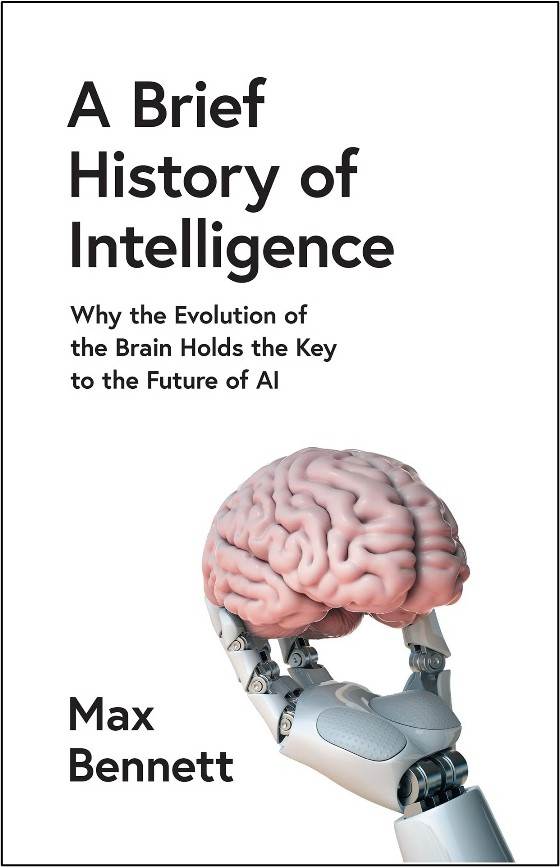
Book Review 2025.04: A Brief History of Intelligence, Why the Evolution of the Brain Hold the Key to the Future of AI, 369 pages, 2023 -March 1, 2025
I consider myself extremely lucky for having found this book as an introduction to the complex subject of evolution of intelligence in life on our planet. The attractive title combined with my current interest in understanding the potential of AI and its limitations was probably a key factor that made me pick it up on my periodic visit to bookshops.
Not being familiar with the subject of anatomy and brain development, it took me nearly a month to complete this medium sized book. Despite having read it diligently, I cannot say I have comprehended the ideas in this book in any decisive way. All I think I can say is that I have a reasonable awareness of the evolutionary path of human intelligence as narrated by the author and the ability to recognize these concepts in AI applications. I have to browse through this book a few more time to become more familiar with the concept described and internalize it.
The narration in this book unfolds from the simple sensory neurons that enables steering in the first bilaterians, i.e. organisms with separate ingestion point and excretion point, to the current day complex human brain with its ability to communicate using language. The evolutionary path is traced through the five major breakthroughs of increasing complexity, starting with steering using neurons seen in bilaterians, to reinforced learnings using memory in the first vertebrates, to simulation or the ability to anticipate seen in the first mammals, to mentalizing, i.e. ability to think about the future and think of others to the fifth and the final stage of speaking that is seen only in humans.
The author describes insightful experiments designed by researchers to isolate various brain function for animals like rats to validate many hypotheses of brain functioning. Further in many instances the researchers were able to confirm the same findings in human being’s inability to perform the function attributed to the damaged part of the patient’s brain.
This is an ideal book for anyone interested in understanding human intelligence as well as learning more about how AI has not only evolved but also its potential in the near future. Readers knowledgeable about human anatomy, especially of the human brain will find this book easier to relate to and thereby comprehend. Others need to have a bit more application to read through some of the sections more than once to grasp it. The reference to clearly drawn diagrams of brain anatomy and its evolutionary path helps the unacquainted readers. All in all, this is a book that is worth having in your library even if you do not read it one stretch and plan to read it over a period of time.
Happy Reading and wishing you all the time and focus required to read this very relevant and impactful book as we confront AI in every device to know it utility and its limitations.

Social Profiles